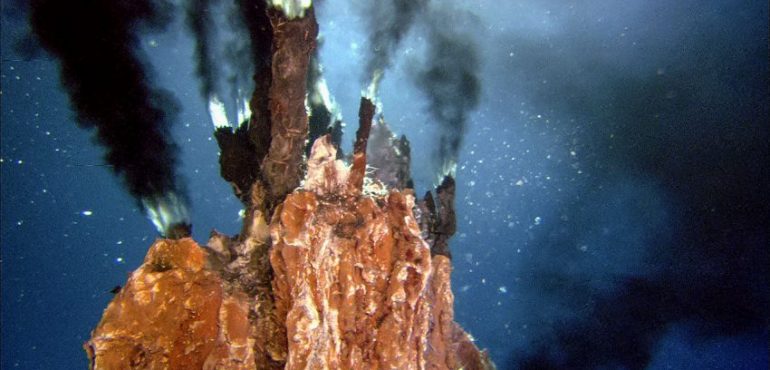The chemical chain of events that led to the origin of life on Earth is likely forever lost to the mists of time. But some of our earliest ancestors—including the microbial Eve from which all modern cells descended—left behind traces in the genes they passed to their descendants. To track these shared genes, geneticists have surveyed nearly 2000 genomes of modern microbes. Now, researchers report that they’ve used this sort of genome mining to reveal new insights about the daily life of our last universal common ancestor, or LUCA. The results suggest that LUCA was a heat-loving microbe that fed on hydrogen gas and lived in a world devoid of oxygen, bolstering strong suspicions that life on Earth formed in and around hydrothermal vents such as those found near undersea volcanoes.
Today, the cells that make up all life on Earth are clustered into three broad groups: bacteria, archaea, and eukaryotes. The first two comprise prokaryotes—cells without a nucleus. A distant union between these two formed eukaryotes—cells with a nucleus that make up all the complex multicellular organisms including plants and animals.
Genetic studies to date have revealed some tantalizing clues about LUCA. Most evidence suggests that, like modern cells, LUCA stored genetic information using DNA. It also built proteins and used adenosine triphosphate as its currency for energy. But it has been harder for geneticists to know other details of LUCA’s lifestyle. One major complication: Microbes not only pass genes to their progeny, but also swap them among their neighbors in a process called horizontal gene transfer. This makes it hard to tell whether genes shared by separate microbes reflect a shared lineage or whether some bugs were just better at spreading their genetic material far and wide. And that makes it harder to pin down LUCA’s lifestyle.
To get closer to doing just that, researchers led by William Martin, an evolutionary biologist at Heinrich Heine University in Dusseldorf, Germany, took a more stringent approach to identifying genes that were likely inherited. Rather than looking for genes shared by a single species bacteria and archaea, they searched for those shared by at least two species of bacteria and two archaea. This gave them an initial count of some 6 million genes grouped into more than 286,000 related gene families. Further analysis revealed that only 355 of these gene families were broadly distributed across all modern organisms, and thus could be tracked from an ancestral species through all of its descendants. That made the 355 gene families likely LUCA candidates.
As Martin and his colleagues report in today’s issue of Nature Microbiology, these genes aren’t randomly scattered throughout modern organisms, but fall into distinct groups that reflect LUCA’s likely metabolism. Most notably, they reveal that LUCA was an anaerobe that grew in an environment devoid of the oxygen that most cells today require. That jibes with what scientists know about Earth 4 billion years ago, a period known as the late heavy bombardment. Not long after the planet’s formation, meteors and comets rained steadily down, the seas periodically boiled away, and the atmosphere lacked oxygen. The gene scans also show that LUCA was almost certainly a heat-loving “thermophile” that fed on hydrogen gas (H2), as others have proposed. Today, many microbes produce H2. But because LUCA preceded them, it would have had to belly up to a geological source of hydrogen, such as a hydrothermal vent like those found near an undersea volcano.
James Lake, an evolutionary biologist at the University of California, Los Angeles, calls the new work “remarkable” and “an important step forward.” Lake also notes that LUCA shares its lifestyle with two groups of modern microbes: clostridium, a genus of anaerobic bacteria, and methanogens, a group of H2-eating archaea. So even though the LUCA is long gone, its closest relatives may still be with us.
Source: AAAS, Full Article


